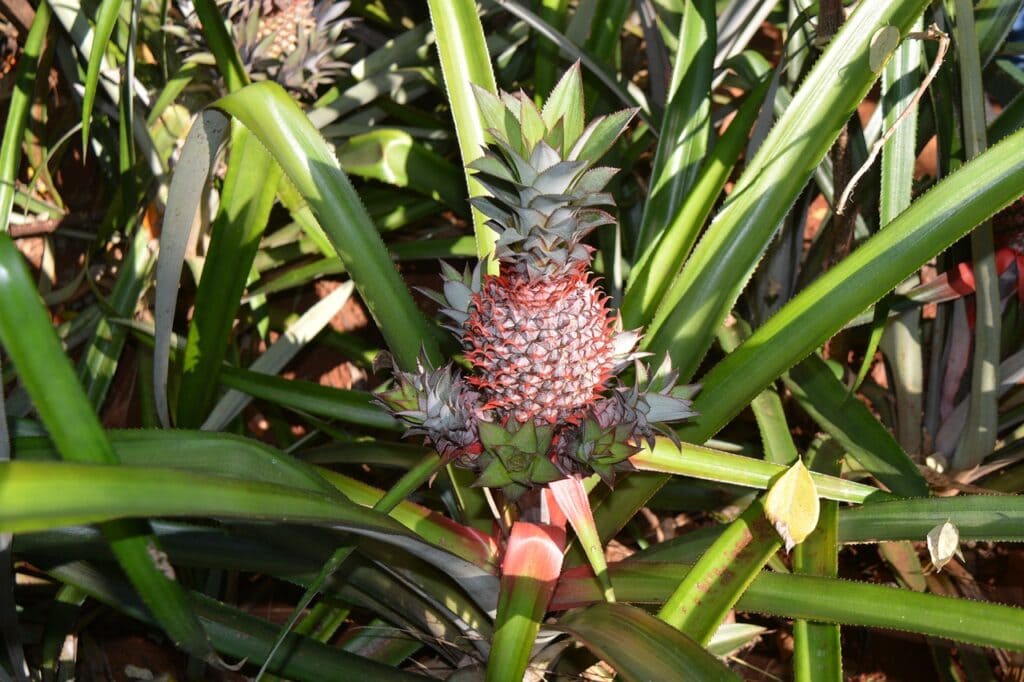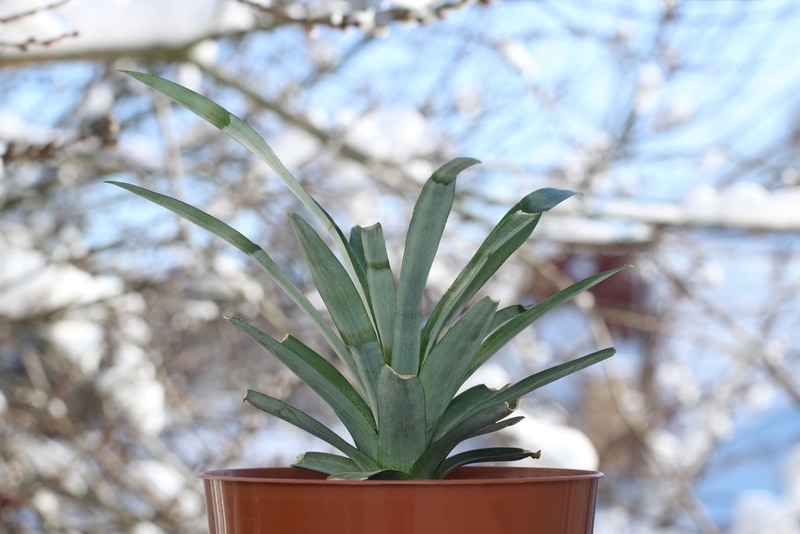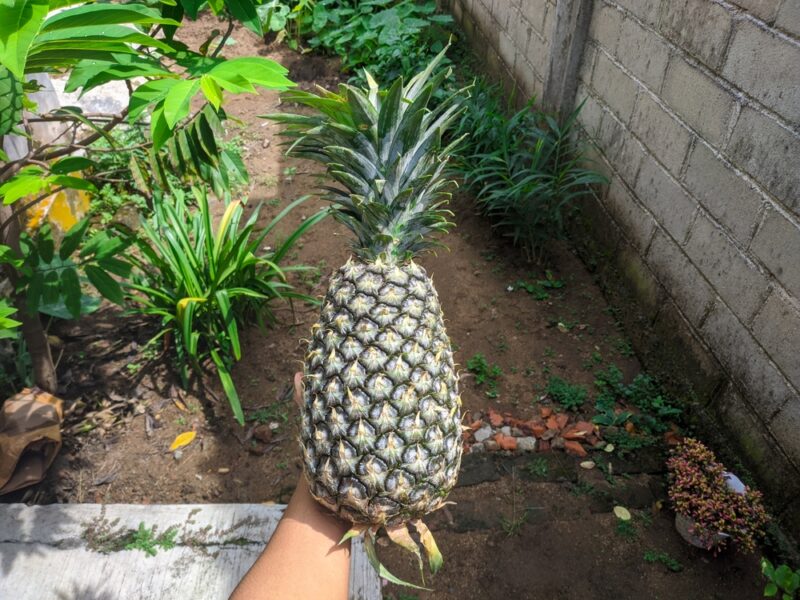How to Grow a Pineapple From the Top (5 Expert Tips)
-
Codee Chessher
- Last updated:

You may have heard that you can grow a pineapple of your own with just the top of a pineapple from the grocery store, and it’s true! Once you’ve enjoyed your delicious pineapple, don’t throw away the top! This technique is called propagation, which takes a while to literally yield fruit.
In the meantime, a propagating pineapple doubles as a gorgeously tropical houseplant. Let’s check out how you can turn a pineapple crown into more pineapples below.
The 5 Steps to Grow a Pineapple From the Top
1. Cut & Trim the Crown

The top of a pineapple is technically called the crown, but the term top works fine too. To cut off the crown, firmly grasp the pointy leaves with a gloved hand and pull while twisting. Sometimes the crown just doesn’t want to come off, so you may also take a sharp paring knife and cut the crown off.
Now, inspect the crown for excess material. You want to trim extra fruit flesh, the suckers between the flesh and leaves, and any protruding leaves. Next, trim the bottom of your pineapple stem. You really just need an inch or two off the bottom, which is where roots will grow.
2. Dry the Pineapple Crown
Many people skip this step and ultimately regret it later, so save yourself the trouble and dry your pineapple crown before planting. Put it in a warm area with lots of ventilation – a fan helps speed up the drying process by a lot.
The purpose of drying the stalk and crown is to let excess moisture dry up. If left, the moisture can foster mold and rot, which you definitely don’t want. The crown may be alive, but it was literally just severed from the fruit, so it can’t devote energy to fighting rot and growing a new plant.
3. Place in Water or Soil

There are pros and cons to both water propagation and soil propagation for pineapples. Putting the dried crown in a vase can be a new tropical houseplant, while propagating in the soil is messy but considerably slashes propagation time. In water, pineapple crowns take two to four months to grow roots sufficient for planting. In soil, they typically take two months or less.
In water, you want to watch your pineapple crown carefully for signs of root growth. Change the water every few days, too. Once your roots have grown two or three inches, the crown is ready for planting. Alternatively, just plant the crown in a moist succulent or cacti potting mix and ensure there’s ample drainage to prevent rot. Planting in soil is a bit harder because you can’t observe the root growth, and wildlife may find the crown to be a tasty snack.
4. Plant & Care for Your Pineapple Plant
Now that you’ve got a pineapple crown with roots, it’s time to plant it, if you haven’t already. It takes pineapple plants up to 3 years to flower and bear fruit, but providing the plant with tailored growing conditions can shorten that to just a year or two. Let’s briefly cover some of the pineapple plant’s preferred conditions so you can give yours the best chance of bearing fruit sooner.
- Warm, sunny weather between 68°F and 86°F
- Moderate to high humidity between 40–60%
- Well-draining, well-aerated, and uncompacted sandy loam
Pineapples can tolerate chilly nights, but generally, you’ll want to keep them warm. Too much cold can stunt their growth and discourage fruit growth. If you live in a cold climate, that may require an indoor grow so you can precisely control the temperature and humidity.
Pineapples can do well in the ground or in pots, but most people seem to opt for pots. If you do, we recommend putting a wet pebble tray underneath your pot, which should have drainage holes. The tray helps drain wastewater while maintaining humidity.
Soon enough, your crown will be a beautiful tropical plant, but you were in this for the fruit, weren’t you? Sorry, but that takes a bit longer! In ideal conditions, your pineapple plant may mature as soon as it’s a year old or so. This is when the plant flowers and grows a big, fat, juicy pineapple.
5. Harvest Your Pineapple

Because pineapples are perennials, they only flower once and produce a single fruit per plant. If you want enough pineapple for the zombie apocalypse, you’ll have to plant multiple plants.
Harvesting pineapples can be a bit tricky because the color isn’t always a reliable indicator that the fruit is ripe or not. However, generally, pineapples are ripe when they’re largely a nice yellow color with a little brown towards the crown. Some pineapples are more golden than others, but you definitely don’t want them to get dark – those are overripe and less sweet than truly ripe pineapples.
Once your fruit is ripe, take a sharp knife and cut the bottom of the pineapple from the stem and flower below. Voila, you have a new homegrown pineapple!
Final Thoughts
Pineapples take a long time to blossom and bear fruit, but many think it’s well worth it. To see what the fuss is all about, consider planting the crown from the next pineapple you pick up from the grocery store or produce stand.
Featured Image Credit: goosyphoto, Pixabay
Contents

